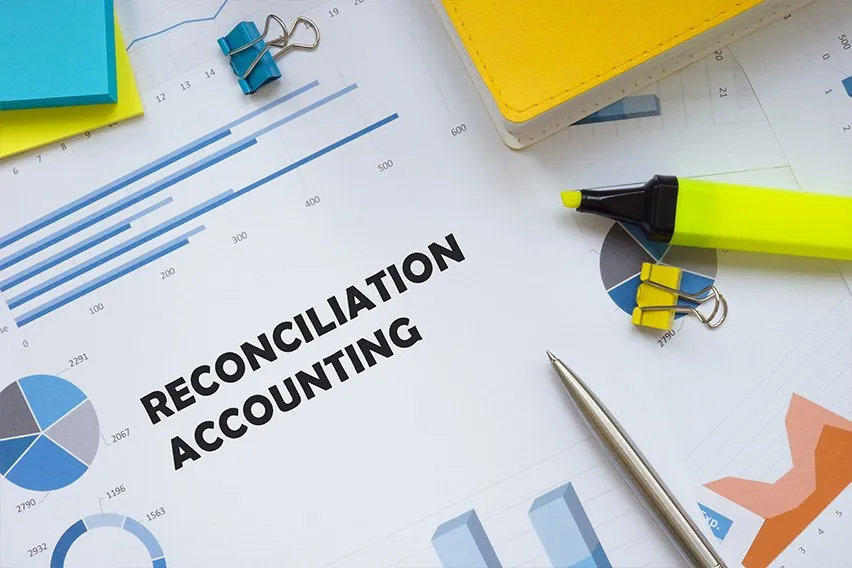What Should You Be Doing at the End of Every Business Day?

A vital part of being a small business owner is keeping up-to-date on your bookkeeping. To ensure that you have accurate financial data you should be reporting information daily into your records.
Knowing what to record and how often to do so, so that you can have an accurate summation of your transactions.
At the end of every business day you should be recording:
- Sales and revenue transactions, including cash transactions
- Accounts Receivable, if you extend credit to your customers
- Accounts Payable, if you purchased from a vendor or supplier
- Summary of Transaction recorded into your general ledger
This article will also discuss:
8 Steps to Preparing a Bank Reconciliation
Maintaining Sales and Cash Receipts Journals
8 Steps to Preparing a Bank Reconciliation
You can verify the amount of cash available in your checking account by preparing a bank reconciliation when you receive your monthly bank statement.
Your cash balance will never match the balance shown on your bank statement. There are many reasons for this: delays in checks and deposits clearing in your account, automatic bank charges and credits you have not recorded and errors you might have made in your books. Doing a bank reconciliation is the only way to catch these discrepancies.
Preparing a bank reconciliation will ensure that the account balance is your books are up-to-date and it will be easier to spot any irregularities such as employee theft.

Here’s a simple step-by-step process to prepare your bank reconciliation.
Step 1: Make a List of Deposits in Transit
Review and compare deposits listed on your bank statement with deposits show in your cash receipt journal. Your bank reconciliation should list any deposits that do not show up as cleared on the bank statement. Review your last month’s bank reconciliation and figure out if all of last month’s deposits in transit cleared on the current month’s statement. If they have not cleared, investigate to see what happened to them.
Step 2: Make a List of Outstanding Checks
Mark each that cleared on this month’s bank statement in your cash disbursement journal. List all checks from the cash disbursement journal that did not clear on your bank reconciliation. Keep track of any checks that were outstanding last month that still have not been cleared by your bank. Investigate further if you a check has not cleared for several months.
Step 3: Track Any Bank Charges or Credits
In your bank statement, take not of any special charges or credits made by the bank that you have not recorded in your books. Post all these entries to your general ledger.
Step 4: Compute the Cash Balance per Your Books
Calculate the general ledger cash account to arrive at your ending cash balance.
Step 5: Enter Bank Balance on the Reconciliation
At the top of the bank reconciliation, enter the final balance from the bank statement.
Step 6: Total the Deposits in Transit
Add up the deposits in transit and recording that on the reconciliation. Then add the total deposits in transit to the bank balance to arrive at a subtotal.
Step 7: Total the Outstanding Checks
Add up the number of outstanding checks and enter the total on the reconciliation.
Step 8: Calculate Book Balance per the Reconciliation
Subtract the total outstanding checks from the subtotal in step 6. This should equal the balance shown in your general ledger.

Maintaining Sales and Cash Receipts Journals
Daily sales should be recorded in a sales journal. You can simplify your bookkeeping by combining sales and cash receipts journal. So, in one journal, you would record all sales (Cash and cred) and all cash receipts – including accounts receivable – in one journal, which your online software should be able to accommodate.
These entries in your sales and cash receipts journal come from the source documents you use in your business every day – invoices, daily cash register totals, daily cash sheets and daily sales registers.
Tracking Sales Invoices
If you sell goods or provide services, your company should be using sales invoices. You should be recording each of those sales into a sales journal. If you provide your customers with credits, you will also post entries into your accounts receivable ledgers to make sure each customer account is consistently up-to-date.
All of your sales invoices should be numbered. Remember to include canceled or voided invoices when filing by number, so you can account for all your invoices. You can store paper copies of invoices in your files but tracking your invoice digitally is much more efficient. If you do prefer using paper invoicing, make sure to prepare a copy for yourself and your customers.
All invoices should include the following information:
- Date of sales
- Quantity (if applicable)
- Price or rate
- An extension column, if applicable (quantity multiplied by price)
- A payment due date
- Billing information
Creating a digital invoice template is easy, as there are many free online resources.
RELATED ARTICLES

 How Much Should I Pay My Employees?
How Much Should I Pay My Employees? How to Get More Customers for My Business: 7 Effective Ways
How to Get More Customers for My Business: 7 Effective Ways How to Increase Revenue: 13 Strategies
How to Increase Revenue: 13 Strategies Pros and Cons of Starting Your Own Law Firm
Pros and Cons of Starting Your Own Law Firm Smart Tips for Owning Multiple Businesses and Making Them Profitable
Smart Tips for Owning Multiple Businesses and Making Them Profitable 8 Ways to Get Money to Start a Small Business
8 Ways to Get Money to Start a Small Business